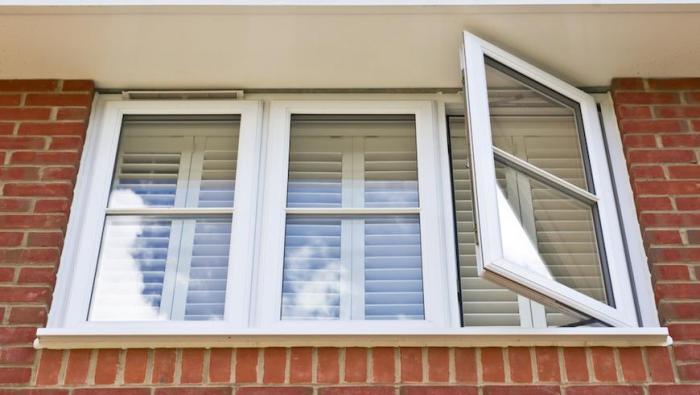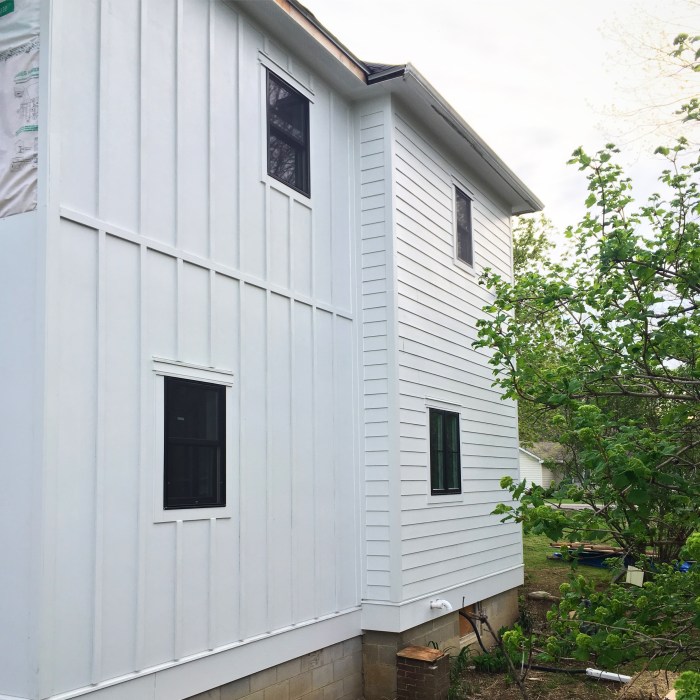New Window Installation A Comprehensive Guide
New window installation is a significant home improvement project that can dramatically enhance your home’s aesthetics and energy efficiency. From understanding the various window types available, like single-pane, double-pane, and energy-efficient options, to the crucial planning and preparation steps, this guide provides a comprehensive overview. We’ll explore different materials, sizes, and shapes, and delve into the installation process, safety precautions, and cost considerations.
This guide covers the entire process, from initial planning and measurements to the final installation steps. We’ll examine the specific requirements for various window types, such as casement, awning, and sliding windows, and address important considerations for energy efficiency and sustainability. Detailed tables provide comparisons and cost breakdowns, making the process more accessible and easier to understand.
Introduction to Window Installation
New window installations are a significant home improvement project that enhances both aesthetics and energy efficiency. Proper installation ensures long-term performance and minimal maintenance. This process involves careful planning, precise measurements, and adherence to building codes. Choosing the right window type and materials is crucial for optimal results.
The installation process generally involves removing the old windows, preparing the openings, installing new window frames, and sealing all gaps to prevent drafts and water damage. This process requires specialized tools and expertise, making it beneficial to hire professional installers.
Window Types
Various window types are available, each with unique characteristics and applications. Understanding the differences between single-pane, double-pane, and energy-efficient windows is essential for making an informed decision.
Single-pane windows are the simplest type, offering good visibility but limited insulation. Double-pane windows feature two panes of glass separated by an air or gas space, significantly improving insulation and energy efficiency. Energy-efficient windows often incorporate advanced glazing technologies, low-emissivity coatings, and specialized frames to maximize energy savings and minimize heat transfer.
Window Materials
Different materials are used in window construction, each offering unique properties and advantages. The choice of material influences the window’s aesthetics, durability, and performance.
Wood windows are known for their natural beauty and traditional appeal. Vinyl windows are popular for their low maintenance and affordability. Aluminum windows provide excellent strength and durability. Composite materials combine the benefits of multiple materials, often offering a balance of aesthetics, durability, and energy efficiency.
Window Sizes and Shapes
Windows come in various sizes and shapes, adapting to different architectural styles and functional needs. Standard sizes are readily available, while custom sizes are possible for unique designs. Common shapes include rectangular, square, arched, and bay windows. The choice of size and shape depends on the architectural design and the amount of natural light desired.
Comparison of Window Types
| Window Type | Pros | Cons |
|---|---|---|
| Single-Pane | Affordable, simple construction | Low insulation, high energy loss |
| Double-Pane | Improved insulation, better energy efficiency than single-pane | Higher cost than single-pane, slightly reduced visibility compared to single-pane |
| Energy-Efficient | Superior insulation, high energy efficiency, and potentially reduced noise | The highest cost among the three types, potentially a slightly more complex installation |
| Wood | Natural beauty, traditional aesthetic | Susceptible to rot and decay, higher maintenance |
| Vinyl | Low maintenance, durable, affordable | May not have the same aesthetic appeal as wood, and can be less aesthetically pleasing compared to wood or aluminum |
| Aluminum | Strong, durable, low maintenance | Can be less aesthetically appealing than wood or vinyl, and susceptible to warping in extreme temperatures |
Planning and Preparation
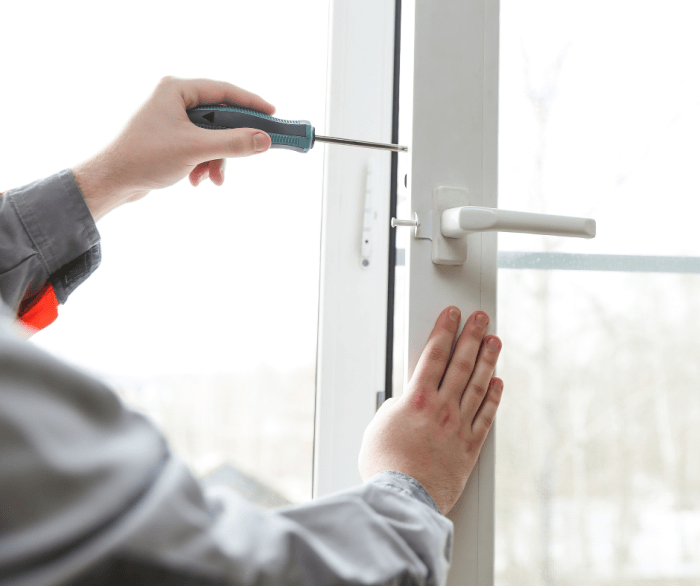
Source: medium.com
Careful planning is crucial for a successful window installation project. This involves meticulous preparation, precise measurements, and adherence to local regulations. Thorough planning minimizes potential issues, saves time and resources, and ensures a smooth installation process.
Accurate planning, including precise measurements and site assessment, directly influences the project’s overall success. By adhering to local building codes and obtaining necessary permits, the project progresses legally and efficiently. This approach reduces risks and ensures compliance, protecting both the installer and the homeowner.
Accurate Measurements and Site Assessment
Precise measurements are fundamental for a successful window installation. Incorrect measurements lead to costly adjustments, delays, and potential fit issues. The site assessment verifies that the installation location is suitable for the new windows. This involves checking for sufficient space, structural integrity, and accessibility for the installation team. In addition, the assessment identifies any potential obstacles or challenges that might impact the installation process.
Permitting and Regulations
Local building codes and regulations dictate the necessary permits and approvals for window installations. The homeowner should consult with the local authorities to determine the specific requirements. These requirements may include obtaining building permits, checking for easements or utility restrictions, and ensuring compliance with energy efficiency standards. Obtaining the required permits ensures the installation complies with all local regulations and avoids potential legal issues.
Essential Preparation Checklist
A comprehensive checklist ensures that every critical step is addressed before the installation begins. This approach minimizes unforeseen complications and ensures a streamlined process.
- Confirming the availability of necessary materials.
- Preparing the installation site by removing any obstacles or debris.
- Checking for adequate access and support for the installation team.
- Ensuring the existing structure is suitable for the new window.
- Confirming a sufficient power supply for any electric components.
- Gathering necessary documentation (e.g., permits, blueprints).
- Scheduling the installation with the chosen contractor.
Tools and Equipment
The required tools and equipment for window installation vary depending on the type of window and the complexity of the project. A list of common tools and equipment is essential to have on hand for efficiency.
- Measuring tools (tape measure, level, framing square, laser level).
- Cutting tools (utility knife, reciprocating saw, circular saw).
- Drilling tools (drill, drill bits).
- Fastening tools (screwdrivers, hammers, nails, screws).
- Safety equipment (safety glasses, gloves, hard hat, work boots).
- Other tools like putty knives, caulk guns, and cleaning supplies.
Installation Process
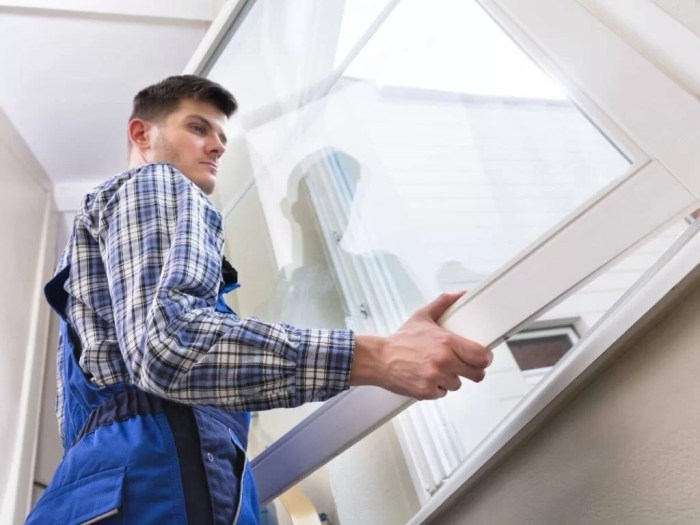
Source: aldawindows.com
The window installation process, while seemingly straightforward, demands meticulous attention to detail to ensure a durable and weather-tight final product. Proper installation is crucial for maximizing energy efficiency, preventing drafts, and prolonging the lifespan of your new windows. This section articulates the critical steps involved in window installation, from initial placement to final sealing.
Handling and Placement
Carefully handling windows during installation is paramount to avoid damage. Windows should be transported and positioned using appropriate lifting equipment, ensuring that they are not dropped or subjected to excessive force. Proper placement involves verifying that the window frame’s dimensions align with the opening’s measurements. Using a level and plumb bob ensures a straight and secure fit.
Securing the Windows
Securing windows to the frame involves using appropriate fasteners, such as screws, nails, or specialized anchors. The choice of fastener depends on the window type and the building material. A critical consideration is ensuring that the fasteners are long enough to penetrate the framing members securely. Using appropriate sealant or caulk during installation is also important. This is crucial for achieving a tight fit, preventing leaks, and enhancing energy efficiency.
Window Seals
Various types of window seals, including weatherstripping and sealant, contribute significantly to the window’s performance. Weatherstripping, often made of rubber or vinyl, creates a tight seal along the window’s perimeter, reducing drafts and noise. Sealant, typically silicone or acrylic, fills gaps between the window frame and the building structure, creating an airtight barrier. Proper application of both is essential for preventing water infiltration and maintaining energy efficiency.
Completion Procedures
Completing the installation involves several crucial steps. First, verify the window’s alignment and tightness. Then, apply caulk around the window’s edges to fill any gaps. This ensures a watertight seal and improves the window’s aesthetic appeal. Next, install weatherstripping to further enhance the seal and reduce drafts. Thoroughly inspect the installation to ensure all components are correctly placed and secure.
Installation Process Table
| Step | Description | Image |
|---|---|---|
| Step 1: Preparation | Verify window dimensions align with opening; check for structural integrity of the opening; ensure all necessary tools are ready. | (Imagine a technician measuring the opening with a tape measure, a level resting on the frame, and various tools laid out on a workbench) |
| Step 2: Positioning | Carefully lift and position the window into the frame; ensure plumb and level alignment using a level and plumb bob; mark appropriate screw placement points. | (Imagine a window being carefully lowered into place within a framed opening; a plumb bob is used to ensure the window is straight; screw placement marks are visible on the frame.) |
| Step 3: Fastening | Secure the window to the frame using appropriate fasteners (e.g., screws, nails); ensure fasteners are appropriately long and penetrate framing members securely; confirm a tight fit. | (Imagine the technician inserting screws into pre-marked points on the frame to attach the window firmly. The screws are fully driven in, and the window appears securely attached.) |
| Step 4: Sealing | Apply sealant (e.g., silicone) along all window frame edges to fill any gaps; this is essential for a watertight seal. | (Imagine a technician applying a bead of sealant around the perimeter of the window frame.) |
| Step 5: Weatherstripping | Install weatherstripping along the window’s perimeter to create an airtight seal; this will reduce drafts and improve energy efficiency. | (Imagine the technician fitting weatherstripping along the window frame’s edges; the weatherstripping is pressed tightly to the frame, creating a continuous seal.) |
| Step 6: Inspection | Thoroughly inspect the installation to ensure all components are correctly placed and secure; check for any gaps or misalignments; verify proper sealing. | (Imagine the technician carefully checking the window’s alignment, the tightness of the seals, and the overall installation for any imperfections.) |
Considerations for Different Window Types
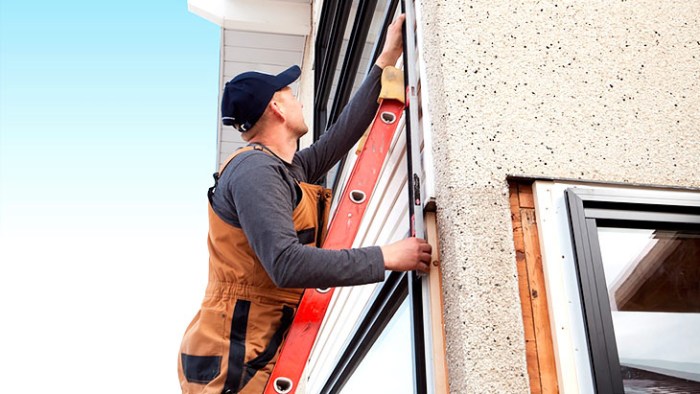
Source: vinyllight.ca
Proper window installation necessitates careful consideration of the specific window type. Understanding the unique characteristics of each type, from casement to sliding windows, is crucial for achieving a successful and durable installation. This section details the key considerations for various window types, including installation procedures and maintenance requirements.
Different window types demand varying installation techniques and maintenance schedules. Careful adherence to these specifics ensures optimal performance and longevity for the windows.
Casement Windows
Casement windows, hinged on one side, are known for their efficient ventilation and aesthetic appeal. Their operation, with a swinging motion, necessitates careful consideration of the frame’s strength and the hinges’ capacity to withstand the force exerted during use. Properly sized hinges and robust frame materials are crucial for longevity.
- Installation Procedures: Casement windows require precise measurements to ensure proper alignment and function. The hinges must be securely fastened to both the window frame and the jamb. Thorough caulking around the window frame is essential for preventing drafts and maintaining energy efficiency. The installation procedure should meticulously account for the window’s swing mechanism to avoid any strain or damage during operation.
- Maintenance Requirements: Regular lubrication of the hinges and rollers is essential to maintain smooth operation. Inspecting the window for any signs of damage, such as warped frames or loose components, is vital. Cleaning the window’s exterior and interior is crucial to maintain its aesthetic appeal and functionality.
Awning Windows
Awning windows, hinged at the top, allow for a significant amount of natural light while offering a unique aesthetic appeal. The outward-opening design of awning windows necessitates careful consideration of the installation site’s structural support.
- Installation Procedures: The installation of awning windows must account for the window’s outward-opening mechanism, ensuring sufficient space and structural support. The window’s balance and stability are paramount, especially in high-wind conditions. The exterior of the frame should be securely anchored to prevent any shifting or distortion.
- Maintenance Requirements: Regular cleaning of the window’s exterior is essential to maintain its appearance and function. Inspecting the hinges and rollers is crucial to ensure smooth operation. Checking for any signs of damage, such as warped frames or loose components, is vital for longevity.
Sliding Windows
Sliding windows offer a straightforward operating mechanism, typically featuring a smooth gliding action. Their installation must ensure that the tracks are correctly aligned and lubricated.
- Installation Procedures: Accurate measurements and careful alignment of the tracks are critical for smooth operation. Lubricating the tracks is crucial for maintaining smooth sliding action and minimizing friction. Proper sealing of the window frame and jamb is essential for preventing drafts and ensuring energy efficiency.
- Maintenance Requirements: Regular cleaning of the window’s exterior and interior is essential to maintain its appearance and function. Inspecting the tracks and rollers for any signs of wear and tear is critical to ensure smooth operation. Lubricating the tracks and rollers is vital for preserving the window’s functionality. Regular maintenance reduces the risk of costly repairs.
Comparison of Installation Methods
- Casement Windows: Require careful consideration of hinge placement and frame strength. The installation involves precise measurements and secure fastening of hinges.
- Awning Windows: Demand attention to the outward-opening mechanism and adequate structural support. The balance and stability of the window must be a primary concern during installation.
- Sliding Windows: Focus on accurate track alignment and lubrication to ensure smooth operation. Proper sealing is essential for preventing drafts.
Safety and Troubleshooting
Proper safety measures and a well-defined troubleshooting plan are crucial for a successful and secure window installation. Adhering to these guidelines minimizes risks and ensures a smooth process. A proactive approach to potential problems, coupled with a thorough understanding of safety procedures, is key to a safe and successful project.
Safety Precautions During Window Installation
Adherence to safety protocols is paramount during window installation. This includes proper personal protective equipment (PPE) and meticulous adherence to safety guidelines. Safety precautions prevent accidents and injuries, safeguarding both the installer and those around the work area.
- Wear appropriate safety gear, including but not limited to safety glasses, gloves, and sturdy work boots. These safeguards protect against flying debris, sharp edges, and potential falls.
- Ensure the work area is well-lit and clear of obstructions. Adequate visibility and a safe workspace minimize the risk of tripping or falling.
- Use proper lifting techniques when handling heavy materials. This includes using appropriate equipment, such as lifting straps, and maintaining a stable posture to prevent back injuries.
- Never work alone, especially when dealing with potentially hazardous tasks, such as working at heights. A second person can provide assistance and supervision, enhancing safety and reducing the risk of accidents.
- Inspect all tools and equipment before use to ensure they are in good working order. This proactive step prevents equipment failure during installation and potential injury.
Troubleshooting Common Installation Issues
A proactive approach to potential problems during window installation is essential. This involves identifying potential issues early and developing a plan to address them. Effective troubleshooting ensures a smooth and efficient installation process.
- If the window frame is misaligned, carefully assess the cause. This might involve adjusting the supporting structure or re-measuring the frame to ensure precise alignment with the opening. Employing proper tools and techniques is vital.
- In cases of leaking windows, inspect the sealant and weatherstripping. Addressing issues with the sealant, such as gaps or insufficient application, will prevent leaks.
- If the window doesn’t operate smoothly, check the window’s hardware. Lubricating hinges and adjusting the locking mechanisms can resolve operational issues.
- When the window won’t open or close correctly, ensure the hardware is properly aligned and lubricated. Adjusting the window’s locking mechanism, if necessary, can resolve the problem.
Troubleshooting Guide for Common Problems
A structured troubleshooting guide can efficiently address issues encountered during window installation. This detailed guide provides step-by-step solutions to common problems.
| Problem | Possible Cause | Solution |
|---|---|---|
| The window won’t open or close | Misaligned hardware, lack of lubrication | Check hardware alignment, lubricate hinges and rollers |
| Leaks around the window | Improper sealant application, gaps in the frame | Remove old sealant, apply fresh sealant, ensure proper frame sealing |
| The window frame is misaligned | Incorrect measurements, improper support structure | Remeasure the opening, adjust the support structure |
| Damage to the window or frame during installation | Inadequate handling or equipment failure | Carefully inspect damage, replace or repair as needed |
Best Practices for Avoiding Common Mistakes
Proactive measures can prevent many common window installation errors. Careful planning, precise measurements, and adherence to established procedures are vital.
- Thoroughly measure the window opening before ordering windows. This step prevents issues arising from incorrect sizing.
- Ensure the window frame is securely supported. Appropriate support prevents sagging and misalignment.
- Carefully follow the manufacturer’s installation instructions. Adherence to instructions ensures proper installation and optimal window performance.
- Properly secure all fasteners. This step ensures the window’s structural integrity.
Potential Risks and Mitigation Strategies
Understanding potential risks and implementing appropriate mitigation strategies is crucial. This proactive approach prevents potential problems during the window installation process.
- Falls from heights during installation are a significant risk. Using fall protection equipment and adhering to safety protocols, such as proper scaffolding and fall arrest systems, can effectively mitigate this risk.
- Accidents involving sharp objects or materials are possible. Using appropriate protective gear and ensuring safe handling practices can significantly reduce these risks.
- Equipment malfunctions can lead to damage or injury. Regular inspections of tools and equipment before use can prevent unexpected failures.
Cost and Materials
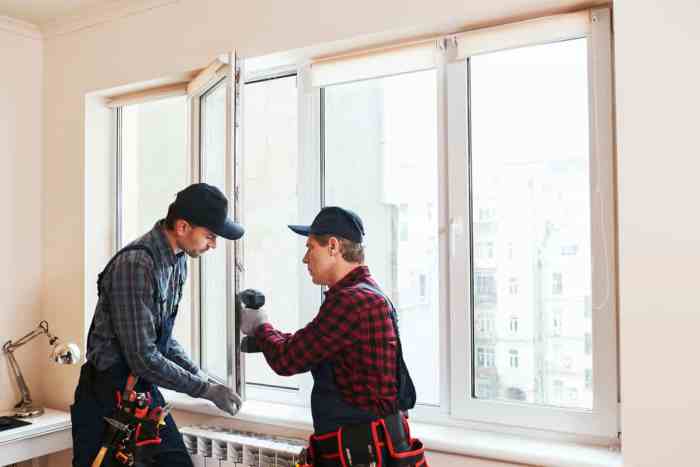
Source: woodbridgehomesolutions.com
A crucial aspect of any window installation project is understanding the associated costs. Accurate cost estimations allow homeowners to budget effectively and make informed decisions. This section delves into the breakdown of material and labor costs, factors influencing pricing, and provides examples of pricing structures.
The overall cost of a window installation project is a complex interplay of material prices, labor rates, and project specifics. Factors such as window type, size, installation location, and complexity all contribute to the final price. A thorough understanding of these variables is essential for achieving a realistic budget.
Material Cost Breakdown
The cost of materials significantly impacts the overall project budget. Different window materials, such as vinyl, wood, or aluminum, have varying price points. Furthermore, the size and type of glass used, along with any specialized features like energy-efficient coatings, can influence the material cost.
Labor Cost Considerations, New window installation
Labor costs represent another substantial component of the total project price. Factors influencing labor costs include the complexity of the installation, the size and number of windows, and any necessary modifications to existing structures. Professional window installers often charge per window or per hour, with the final cost varying based on the scope of the project.
Factors Influencing Installation Costs
Several factors can influence the overall cost of window installation. These include: the complexity of the installation (e.g., existing structure modifications, unusual window shapes); the geographical location (labor costs and material availability vary by region); the specific window type (e.g., custom-designed windows); and the extent of any preparatory work (e.g., demolition, repairs, or additional framing). The quality of materials used will also play a significant role.
Pricing Structures for Different Window Types
Pricing structures for window installations are often tailored to the type of window being installed. A simple, standard double-hung vinyl window will typically have a different price structure than a custom-designed, energy-efficient casement window. Furthermore, window size plays a significant role in the pricing. Larger windows generally command higher costs due to the increased material and labor requirements.
Examples of Pricing Structures
For instance, a standard 3-foot by 4-foot vinyl window could cost around $500-$800 for materials and installation, while a larger, energy-efficient double-paned window of the same type could cost $800-$1200. Custom-designed windows, particularly those featuring unique shapes or materials, can have significantly higher price tags.
Supplier List
Several reputable suppliers provide windows and related materials. Some popular options include [Supplier 1 Name], [Supplier 2 Name], and [Supplier 3 Name]. These companies offer a variety of window types and materials, and often provide resources for estimating installation costs.
Pricing Options Table
| Window Type | Estimated Cost (USD) | Material Supplier |
|---|---|---|
| Standard Vinyl Double-Hung | $500-$800 | [Supplier 1 Name] |
| Energy-Efficient Vinyl Casement | $800-$1200 | [Supplier 2 Name] |
| Custom-Designed Wood Sliding | $1500-$3000+ | [Supplier 3 Name] |
Energy Efficiency and Sustainability: New Window Installation
Modern window installations play a crucial role in optimizing energy use and reducing a building’s environmental footprint. Properly designed and installed windows can significantly impact a structure’s energy consumption, contributing to a more sustainable building. Careful consideration of window materials and installation techniques is essential for achieving these benefits.
Energy-efficient windows are increasingly vital for residential and commercial buildings. By minimizing heat transfer, these windows help maintain a comfortable indoor temperature, reducing the reliance on heating and cooling systems. This translates to lower energy bills and a smaller carbon footprint. Different window materials and installation methods have varying impacts on energy efficiency.
Impact of Window Installation on Energy Efficiency
Window installations significantly affect a building’s thermal performance. Poorly insulated or installed windows can lead to substantial heat loss in winter and heat gain in summer. This necessitates increased energy consumption for heating and cooling, driving up utility bills and impacting environmental sustainability. Conversely, well-designed and installed windows minimize these losses, improving the building’s energy efficiency.
Benefits of Energy-Efficient Windows
Energy-efficient windows offer numerous advantages. Reduced energy consumption translates to lower utility bills for homeowners and businesses. This economic benefit is complemented by a positive environmental impact, reducing reliance on fossil fuels and lowering greenhouse gas emissions. Furthermore, maintaining a comfortable indoor temperature contributes to occupant comfort and well-being.
Environmental Impact of Different Window Materials
The environmental impact of window materials varies greatly. Consideration should be given to the manufacturing process, material sourcing, and the lifecycle of the window components. For example, windows made from recycled materials or sustainably harvested wood have a lower environmental footprint compared to those made from non-renewable resources or materials with complex manufacturing processes.
Examples of Energy-Efficient Window Installation Techniques
Several techniques can enhance the energy efficiency of window installations. Utilizing high-performance glazing, such as low-e coatings or insulated glass units (IGUs), significantly reduces heat transfer. Proper sealing around window frames, using weatherstripping and caulking, minimizes air leakage, further improving energy efficiency. Furthermore, employing double or triple-pane windows can significantly reduce heat transfer and improve insulation.
Optimizing Energy Efficiency During Window Installation
Several strategies can be implemented to maximize energy efficiency during window installation. Careful selection of window frames made from materials with high insulation values is critical. Thorough sealing of all window frames and exterior edges is paramount. Additionally, ensuring proper installation techniques, like precise frame alignment and secure fastening, contributes to a more energy-efficient window system.
End of Discussion
In conclusion, a new window installation can significantly improve your home’s appeal and energy performance. By understanding the different types of windows, the meticulous planning stages, the step-by-step installation process, and the important safety considerations, you can confidently undertake this project. This comprehensive guide equips you with the knowledge and resources to make informed decisions throughout the entire process, from selecting the right windows to managing costs and ensuring a safe installation.


